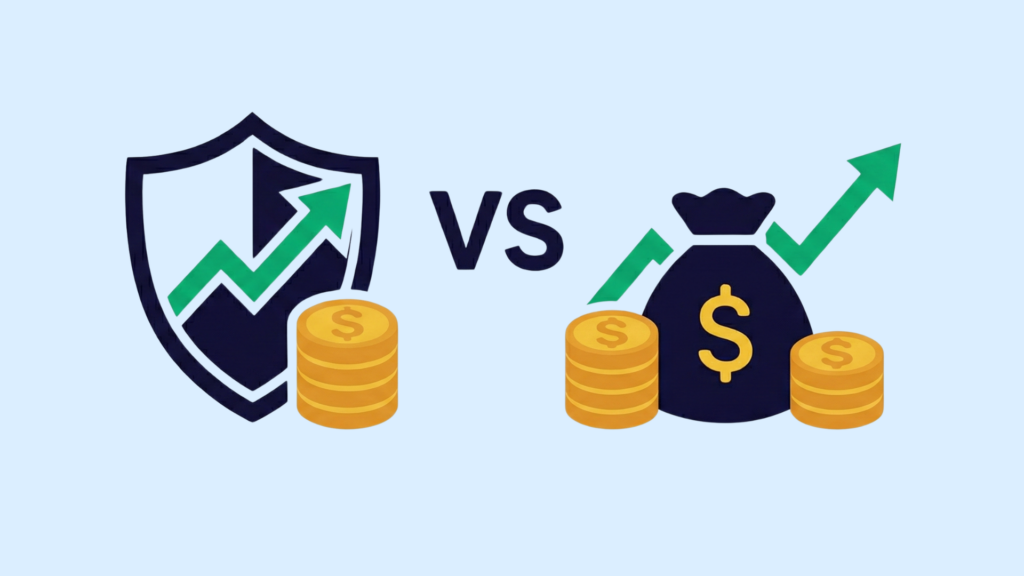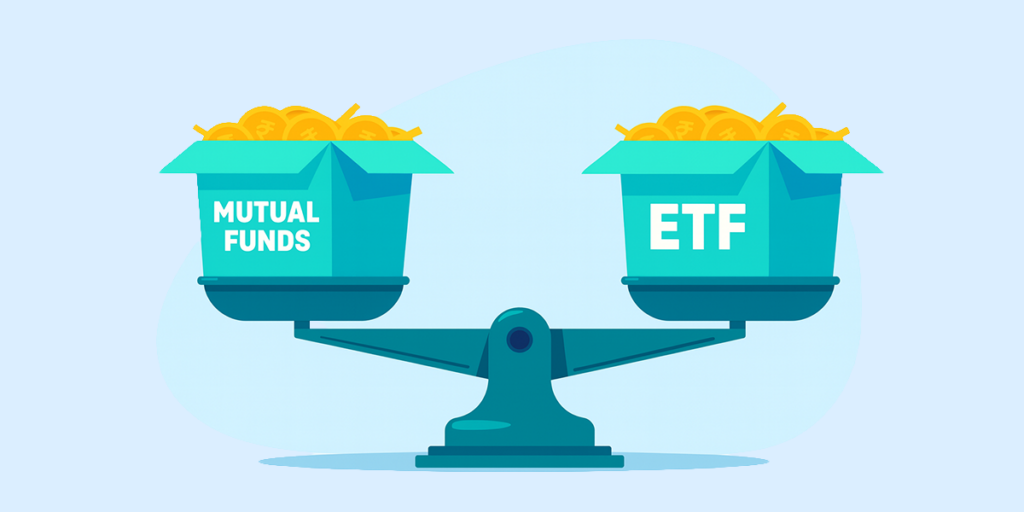When you invest in mutual funds, one of the first things you’ll notice is the return percentage shown across different timeframes—1 year, 3 years, 5 years, and so on. These figures represent the average returns on mutual funds, but the way they are calculated isn’t always as straightforward as it looks. Some returns are shown in absolute terms, some as annualised percentages, and others using more advanced methods like CAGR or XIRR.
For investors, understanding these numbers is crucial. They help you judge whether a fund has performed consistently, how it compares with similar schemes, and whether it aligns with your financial goals. More importantly, they give context to the risk you’re taking.
In this section, we’ll break down the different methods of calculating average returns—absolute, CAGR, and XIRR—and explain how each one works, with examples to make it easy to follow.
What Does Average Return on Mutual Funds Mean?
When investors talk about average returns on mutual funds, they are referring to the expected growth rate of their investment over a specific period. It gives a realistic picture of how much wealth a mutual fund has generated in the past and helps in setting return expectations for the future.
It’s important to note the difference between absolute returns and average returns:
- Absolute Returns show the total increase or decrease in value during the investment period, without considering the time taken.
- Average Returns (also known as annualised returns) represent the yearly growth rate, which makes it easier to compare funds with different holding periods.
This metric is particularly useful for investors who want to compare performance across funds and understand whether they are aligning with their financial goals.
How to Calculate Average Mutual Fund Returns
The average mutual fund growth rate is usually calculated using the Compounded Annual Growth Rate (CAGR) formula:
CAGR = (Final Value / Initial Value)^(1 / Number of Years) – 1
This formula shows the mutual fund average interest rate an investor earns annually, assuming the investment grows at a steady pace.
Suppose you invest ₹1,00,000 in an equity mutual fund, and after 3 years the value grows to ₹1,50,000.
CAGR = (1,50,000 / 1,00,000)^(1/3) – 1
CAGR = (1.5)^(0.33) – 1 = 14.47%
This means the average ROI in mutual funds over 3 years was 14.47% per year, even if the fund had ups and downs during that time.
Why Compounding Matters
Unlike simple interest, mutual fund returns grow on both the principal and accumulated gains, which makes compounding an important factor. This is especially relevant in average return on equity mutual funds, where long-term holding allows investors to ride out market volatility and benefit from growth.
For example, if you invest ₹11 a day through our Daily SIP option, your contributions are compounded more frequently, allowing your money to grow continuously. Over the long term, this approach can help accumulate a substantial corpus from a very small daily investment. Even with a small amount, the power of compounding can significantly boost your returns over the years.
Types of Return Calculations in Mutual Funds
When checking performance, investors often confuse different return metrics. Knowing which calculation method to use is important to understand the average ROI in mutual funds.
- Absolute Return:
- Formula: ((Final Value – Initial Value) / Initial Value) × 100
- Best for short-term investments; less than a year.
- For example, if you invest ₹1,00,000 and it grows to ₹1,10,000 in 6 months, the absolute return is 10%.
- Annualised Return (CAGR):
- Represents the yearly growth rate, smoothing out volatility.
- Useful for long-term funds; more than 1 year.
- For example, ₹1,00,000 growing to ₹1,50,000 in 3 years gives a CAGR of 14.47% per year.
- XIRR (Extended Internal Rate of Return):
- Designed for irregular cash flows, making it the best calculation for SIPs.
- Considers the exact dates of investment and redemption.
- For example, by investing ₹11 every day with our DAILY SIP option in an equity mutual fund for 3 years, XIRR will calculate the true average growth rate based on each daily contribution, providing a clearer picture of your returns.
Average Return on Equity Mutual Funds
Equity mutual funds are one of the most popular investment choices in India. Historically, the average return on equity mutual funds has been around 10–15% annually over long periods, though actual performance depends on market conditions.
- Compared to Debt Funds: Debt mutual funds usually offer 6–8% returns, making them safer but less rewarding.
- Compared to Hybrid Funds: Hybrid funds combine equity and debt, balancing risk and giving around 8–12% on average.
Risks vs Rewards in Equity Investing
- Rewards: Higher long-term wealth creation due to equity market growth, compounding, and dividends.
- Risks: Short-term volatility, market crashes, and sector-specific risks.
For investors who have a long-term investment horizon and a higher risk appetite, equity funds remain one of the best wealth-creation tools.
Why Average Returns Don’t Tell the Whole Story
Looking only at the average returns on mutual funds can be misleading. While averages give a quick snapshot, they don’t capture the full picture of how a fund performs over time.
- Market Volatility Matters: Mutual funds are directly linked to market cycles. A fund may show an average mutual fund growth rate of 12% over 5 years, but this could include periods of negative returns during market corrections.
- By investing ₹11 a day, your Daily SIP strategy allows you to avoid market timing risks, as you’re consistently purchasing mutual fund units regardless of market conditions. Over time, this strategy smooths out the effects of market volatility, providing steady returns.
- Impact of Fund Manager Strategy: Each fund manager follows a unique investment style. A shift in strategy or portfolio composition can significantly impact future performance, regardless of past averages.
- Consistency Over Time: Instead of just the mutual fund’s average interest rate, investors should check rolling returns, Sharpe ratio, and other metrics that reveal how consistently the fund has performed.
- Benchmark Comparison: Always compare a fund’s returns against relevant indices like Nifty 50 or Sensex. For example, a fund delivering 10% returns may look good but if the benchmark was 13%, it actually underperformed.
Did you know?
US ETFs (Exchange Traded Funds) offer a great opportunity for investors looking to diversify their portfolio with international exposure. With Appreciate, you can now access these ETFs easily, benefiting from the growth of US-based companies. Investing in US ETFs can be a strategic way to tap into global markets, adding stability and potential growth to your investment strategy.
FAQs
What is the average return on mutual funds in India?
The average return on mutual funds in India typically ranges from 8–12% annually, depending on the type of fund. Equity mutual funds generally have higher long-term growth potential, while debt and hybrid funds deliver relatively stable but lower returns.
How do I calculate the average ROI in mutual funds?
To calculate the average ROI in mutual funds, you can use formulas like absolute returns, CAGR (Compounded Annual Growth Rate), or XIRR (Extended Internal Rate of Return for SIPs). These methods consider time, compounding, and investment frequency to give a realistic measure of returns.
What is the difference between CAGR and XIRR in mutual funds?
CAGR shows the average mutual fund growth rate for lump-sum investments over a fixed period, while XIRR is used for SIPs or multiple cash flows, reflecting how periodic investments grow over time.
Are equity mutual funds’ average returns higher than debt funds?
Yes, the average return on equity mutual funds is usually higher than debt funds over the long term. Equity funds may deliver 10–15% on average but come with higher risk, whereas debt funds generally range between 5–8%, offering more stability.
How reliable are average mutual fund growth rates for predicting the future?
While mutual fund average interest rates or growth rates provide a useful benchmark, they are not guaranteed. Market volatility, fund management, and economic conditions all affect future performance, so averages should be seen as past indicators and not predictions.
Is ₹11 a day enough for a successful investment?
Yes, ₹11 a day may seem small, but with Daily SIP, it accumulates over time and benefits from compounding. Small regular investments can help you accumulate a substantial amount in the long term, especially with the power of equity mutual funds.
Disclaimer
The information provided in this article is for educational and informational purposes only. It should not be considered as financial or investment advice. Investing in stocks involves risk, and it is important to conduct your research and consult with a qualified financial advisor before making any investment decisions. The author and publisher are not responsible for any financial losses or gains that may result from the use of this information.























